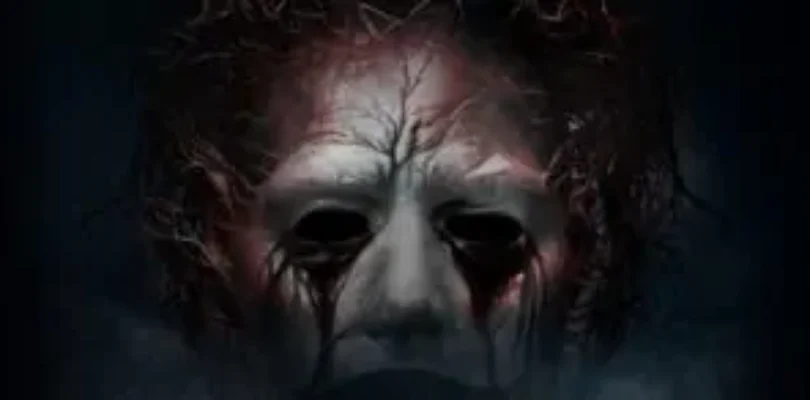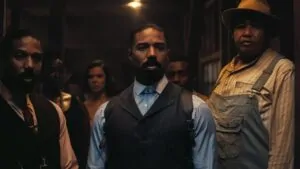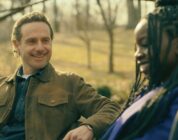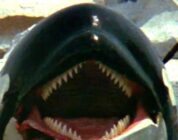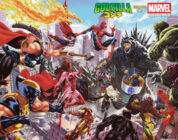It’s not often that a novelization is written by one of the film’s screenwriters, but in the few cases I’ve run across (such as Halloween Ends), it’s been an opportunity for the writer to include elements that were removed from the development process or cut during editing. However, the novelization for The Abominable Dr. Phibes more or less sticks closely to the events of the finished film, even though it’s written by screenwriter William Goldstein, whose script was rewritten by director Robert Fuest.
The most obvious example would be the rat-driven death of Dr Kitaj, as Goldstein’s script had the scene set on a boat. But when Fuest realized it would be too easy for the man to escape by simply jumping into the water, he changed it to an airplane. Goldstein’s novelization follows suit; the events play out slightly differently (one of the cops narrowly misses arriving in time to stop him from flying away, but in the book, none of them are on the scene until after he’s perished), but the boat has still been replaced with Fuest’s idea.
In fact, Goldstein embellishes this scene in a way that wouldn’t quite fit for a boat-set sequence. Prior to Kitaj taking off for the airfield, his wife implores him not to go, as she is nervous about the flight, and even attempts to seduce him to get him to change his mind. The biggest difference between the book and the movie is that we learn a lot more about these various doctors. Their deaths play out pretty much the same way (albeit given more graphic detail than the low-budget/PG movie allowed), but more often than not, we spend some time with them before Phibes shows up to kill them.
Most of said time is devoted to their bedroom behavior, as many of the doctors have more than a passing interest in the opposite sex. Dunwoody (the one killed by bats in the opening scene) spends most of his pre-death time trying to find a woman to hook up with for the evening at some gala before calling it a bust and heading home, and Whitcombe (the one killed by the brass unicorn) has a bizarre role-playing situation going on with his mistress when the cops interrupt to bring him to safety.
In both cases, the movie introduces them moments before their death sequence begins, so audiences are denied (or spared) a peek into their sex lives. We even learn (via internal monologue) that the primary target, Dr. Vesalius (Joseph Cotten), couldn’t even get through his first encounter, deciding sex wasn’t for him. Nothing is particularly explicit, but it’s certainly more titillating than the completely chaste movie.
On the flipside, readers of the book are denied a lot of the movie’s humor, suggesting maybe this was one change Goldstein disagreed with. The hilarious “A brass unicorn has been catapulted across a London street and impaled an eminent surgeon. Words fail me, gentlemen.” line is intact, thankfully, but the movie’s running gags about people mispronouncing things and Inspector Trout being called “Pike” or other fish are absent. It also lacks the little quirks of Phibes himself; the hilarious bit where he scoffs at the art collection belonging to one of the doctors has no counterpart here.
In fact, Phibes is in the book a lot less than he is in the movie. There are fewer musical interludes, almost none of the dialogue, and he doesn’t make much of an appearance during the death scenes either. For example, in the movie, we repeatedly see Phibes watching the action unfold during the plane sequence. Here, the whole scene plays out before we’re even aware that the madman is watching. Goldstein even refers to one of the rare bits of his dialogue left intact as “Phibes drones on,” so perhaps one of Fuest’s changes was to increase Price’s screentime (who could blame him?), whereas Goldstein wanted the character to be more elusive.
On the other hand, he also gives the book a prologue that the film lacks. The movie starts with one of Phibes’ musical interludes before cutting to Dunwoody’s death, but the novel kicks off with a full account of the car accident that left Phibes disfigured.
It’s a pretty detailed and horrific explanation of how a car explodes, though I can’t say that it was necessary. The scene ends with the man being identified as Phibes and also surviving, making the later subplot about Trout trying to find out if he was actually dead even more extraneous than it is in the movie.
The only other change of note occurs at the end, with the death of poor Vulnavia (Phibes’ mute assistant). In the movie, she is burned to death by the acid meant for Vesalius’ son Lem, but Goldstein has her stab herself before Trout and his men can arrest her. The ending also plays better on-screen as a whole.
Goldstein’s novelized account kind of races through the whole thing, spanning not even four full pages from the moment that Phibes explains to the man what he has to do to save his son. In the movie, however, it plays out for about 10 minutes, maximizing the tension that Goldstein didn’t seem interested in reflecting here.
Overall, I’d say it’s a decent enough way to flesh out the characters (Trout also gets some backstory that is essentially the same as Simon Pegg’s in Hot Fuzz: demoted for being too good at his job), but if filmed exactly as Goldstein’s adaptation suggests, the movie wouldn’t be as fun. The deadpan humor, Price’s engaging performance, and, of course, the amazing Art Deco sets that we can’t see on the page are why the movie has endured for over 50 years.
Without them, you’re left with a revenge tale that doesn’t spend enough time with the wrongdoers (who also never interact with one another) in the service of a mostly mute man avenging a woman we never met. Those on-screen enhancements make up for the story’s deficiencies (and then some, in my opinion), making this only of interest to die-hard fans who might want to know what the doctors liked to do in the bedroom.

